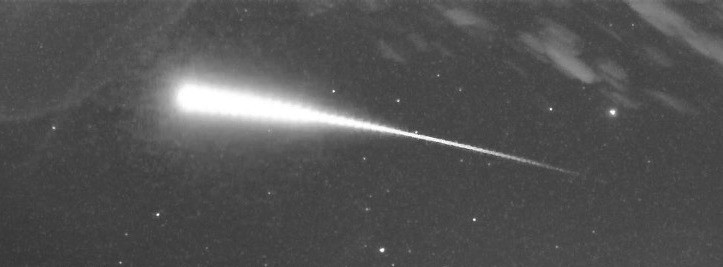A new method developed by Northern Arizona University researchers could provide years of extra warning time for detecting dangerous comets by tracking the meteor showers they leave behind. This approach could transform our ability to protect Earth from potential cosmic impacts.
Published in Planetary Science Journal | Estimated reading time: 5 minutes
When it comes to spotting potentially hazardous comets heading toward Earth, time is everything. Now, researchers have found an ingenious way to detect these cosmic visitors years before current methods – by following the trails of meteor showers they leave in their wake.
“This research gets us closer to defending Earth because it gives us a model to guide searches for these potentially hazardous objects,” explains Samantha Hemmelgarn, a first-year doctoral student in Northern Arizona University’s Department of Astronomy and Planetary Science who led the study.
The research focuses on long-period comets, which take more than 200 years to orbit the Sun. These objects have historically been nearly impossible to spot until they get close to Earth, creating a potential planetary defense challenge. While the risk of impact is extremely small, even a modest-sized comet could trigger catastrophic consequences including global cooling and ozone layer damage.
Using data from 17 known meteor showers, the researchers created computer models to predict where their parent comets might be found in space. By comparing these predictions to the actual locations of known comets, they validated their method’s accuracy. The technique works like following footprints in the snow – the meteor shower particles act as traces that can lead back to the comet that left them behind.
The implications for planetary defense are significant. For large comets, this method could provide over 12 years of additional warning time compared to current detection capabilities. Even for smaller comets, it offers more than a year of extra time to prepare potential defense strategies.
Glossary
- Long-period comet: A comet with an orbital period greater than 200 years, making it particularly challenging to detect and track.
- Meteor shower: A celestial event where multiple meteors appear to originate from the same point in the night sky, created by Earth passing through debris left by a comet.
- Synthetic comets: Computer-generated models that represent where parent comets could be in space based on meteor shower patterns.
Test Your Knowledge
What defines a long-period comet?
A comet that takes more than 200 years to complete one orbit around the Sun.
How much additional warning time could this method provide for large comets?
Over 12 years of additional warning time for the largest comets.
What data did the researchers use to validate their prediction method?
They used data from 17 known meteor showers and compared their model’s predictions to the actual locations of known comets.
Why is early detection of long-period comets particularly challenging?
These comets have been virtually invisible to researchers until they get close to Earth and move toward the sun, making traditional detection methods ineffective for early warning.
Enjoy this story? Subscribe to our newsletter at scienceblog.substack.com.
If our reporting has informed or inspired you, please consider making a donation. Every contribution, no matter the size, empowers us to continue delivering accurate, engaging, and trustworthy science and medical news. Independent journalism requires time, effort, and resources—your support ensures we can keep uncovering the stories that matter most to you.
Join us in making knowledge accessible and impactful. Thank you for standing with us!

